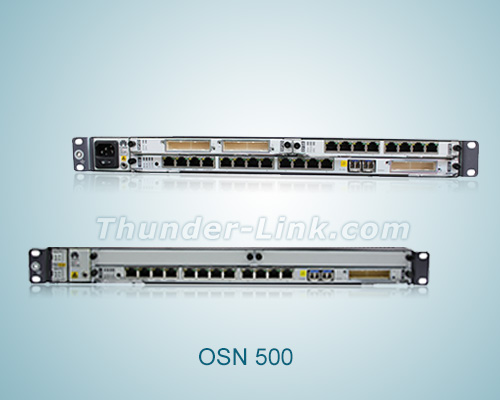[Problem Description]
Trigger conditions:
The problem occurs when some TNH1EGT1 boards of OSN500 have been working for 72 hours or less.

Note
This problem does not necessarily occur on each TNH1EGT1 board. Those that have been properly working for 72 hours will not have this problem.
Fault symptoms:
1. Services carried by the the above transmission board are interrupted.
2. The TNH1EGT1 board continuously reports the ALM_GFP_DLFD alarm, LOP or AIS alarms.
3. Re-installing the board, or powering off and powering on the NE may recover services; however, the problem will recur later.
Note
Cold resets cannot solve the problem nor trigger the problem.
Identification method:
1. Check whether the service is configured correctly on the board.
2. Ensure that service configuration is correct and check whether alarms persist. If the GFP alarms (ALM_GFP_DLFD), LOP alarms (AU_LOP, TU_LOP_VC3, TU_LOP_VC12), or AIS alarms (AU_AIS, TU_AIS_VC3, TU_AIS_VC12) persist, this problem may occur.
3. Check whether the board is produced before October 26, 2011.For the bar code of the board, see the appendix Delivery List of Risky TNH1EGT1 Boards.xls.
4. Re-insert the TNH1EGT1 board. The problem is solved but recurs after a while.
[Root Cause]
No bias circuit was configured at the receive end of the upstream and downstream LVDS receivers on the TNH1EGT1 board. As a result, the bias voltage approached the range specified in chip files. In addition, due to individual differences of LVDS receivers, there was a possibility that the output of the LVDS receivers was abnormal, which triggers service interruption and alarms report such as the ALM_GFP_DLFD alarm, LOP and AIS alarms.
The TNH1EGT1 board produced after October 26, 2011 will not trigger this problem.
[Impacts and Risks]
Services are interrupted.
[Measures and Solutions]
Recovery measures:
Re-insert the TNH1EGT1 board.
Note
Re-installing the TNH1EGT1 board cannot completely solve the problem. The problem may recur within 72 hours after the operation.
Solution
1. To solve the problem that the bias voltage approached the specified range in the AC coupling, change the AC coupling to DC coupling on the LVDS service bus in the TNH1EGT1 board.
By using this solution, the TNH1EGT1 board produced after October 26, 2011 has no such problem.
2. The TNH2EGT1 board does not have this problem; therefore, it can replace the TNH1EGT1 board.


Comments are closed